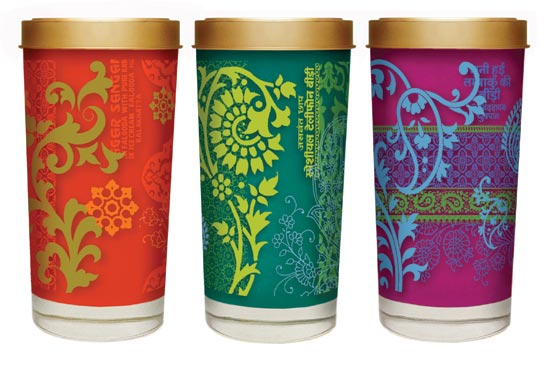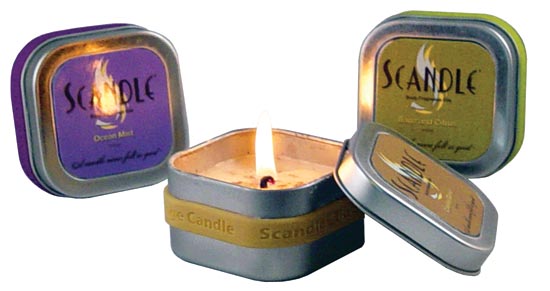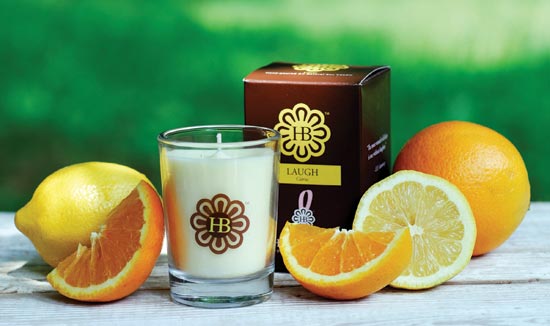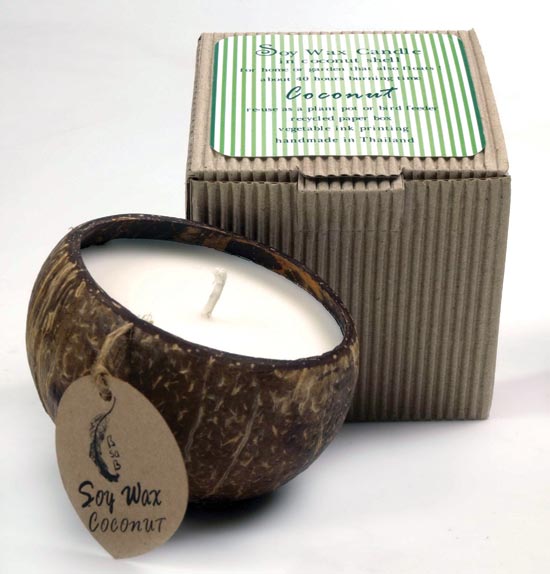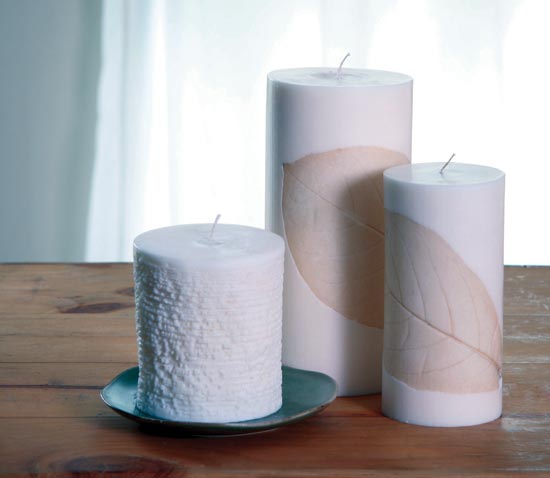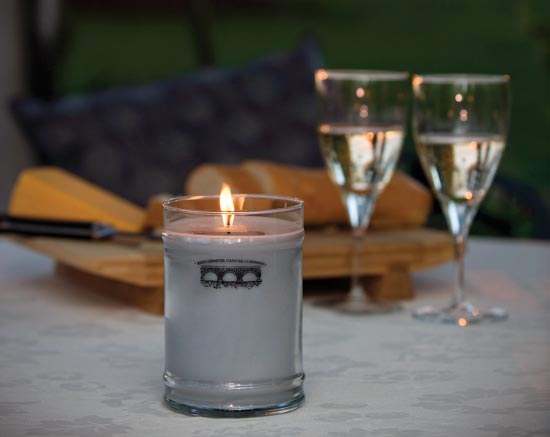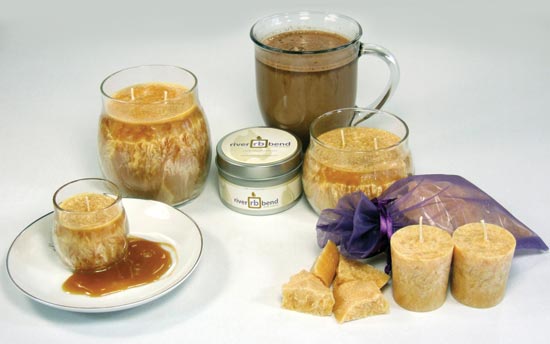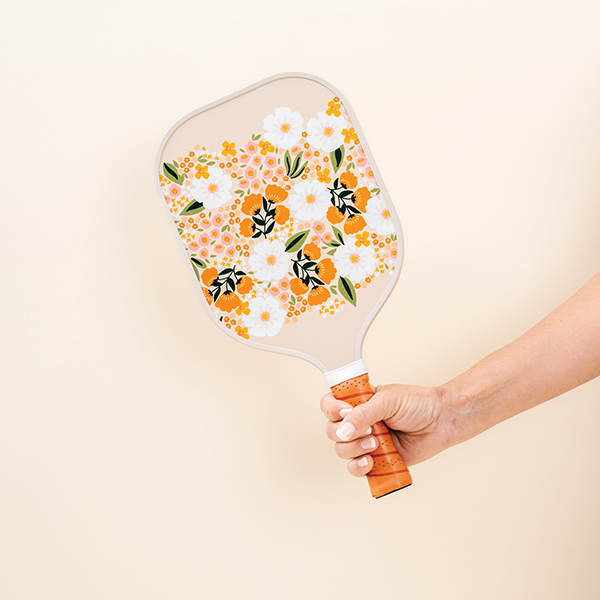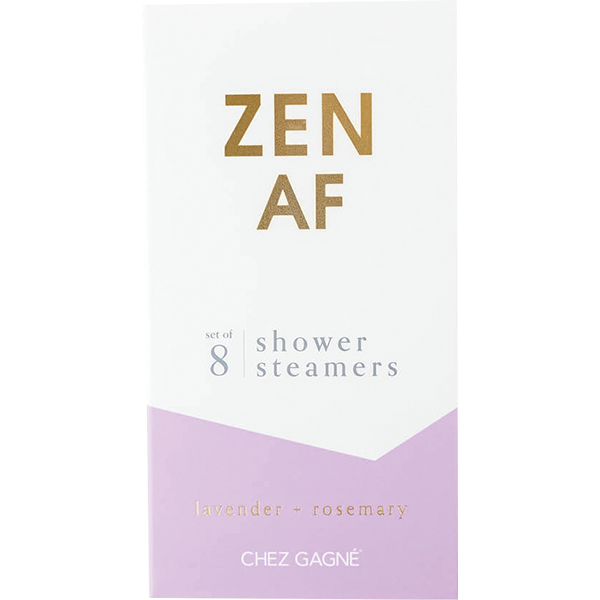Candles Glow Green
The Joys of Soy
A growing green movement has slowly carved out a niche for candles made from renewable resources. As opposed to paraffin, a by-product of petroleum, green candles are made from a whole host of renewable plant-based materials. The primary players in this arena are candles made of soy wax. Barbara Miller, spokesperson for Washington, D.C-based National Candle Association says that their growing presence is about four years strong. “I think we generally saw soy candles starting to make a notable entry into the U.S. marketplace in about 2005, which corresponds with the general increase in the green movement and using renewable resources,” she says.
Tong (Toni) Wang has conducted extensive research on soy wax and candles made from it. The associate professor at the Department of Food Science and Human Nutrition at Iowa State University, says that soy wax is mainly hydrogenated soybean oil and burns slower and more completely than paraffin wax. Candles made from soy wax are distinguished by a reduced flow of wax through the wick and a candle that lasts longer (than ones made from paraffin). The research also shows that soy wax begins to melt at a lower temperature, a smaller flame is needed to burn the candle, and that soot production is non-existent or kept at a minimum.
However, the texture of soy wax is different from paraffin wax and candles made from 100% soy wax work best when contained in glass or tin jars. “It lacks the good elasticity or cohesiveness that paraffin wax has, so the solid material tends to be more crumbly and easy to fracture, and sometimes it can be too soft and greasy and lacks physical strength,” Wang says. For this reason, sometimes a touch of paraffin wax is included with soy especially when crafting stand-alone candle products such as pillars.
David Kasteler, director of marketing at BsaB (bee-säh-bee) Candles in Provo, UT, says that because soy wax is all natural, customers can use it as a moisturizer. Soon after lighting the BsaB candles, the soy wax is warm to the touch and can be used as a soothing massage oil or skin moisturizer. Soy massage candle kits from the company are sold in Deep Summer, Secrets, and Silence fragrances.
Multiple choice
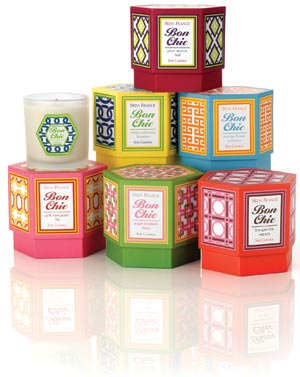 Tracy Sullivan, vice-president of Hillhouse Naturals in Wickliffe, KY, is proud that the company supports the U.S. economy by using wax made from American-grown soybeans in their soy wax candles. Their glass jar candles and concrete container selections are made out of 100% soy wax. Votives and pillars contain a little bit of paraffin so that the candles hold their shape. Sullivan adds that soy wax cleans up easily with soap and water. Hillhouse Natural’s Living Green collection is the company’s best seller. New for 2009 is the Natural Living collection with key fragrances of patchouli and ylang ylang.
Tracy Sullivan, vice-president of Hillhouse Naturals in Wickliffe, KY, is proud that the company supports the U.S. economy by using wax made from American-grown soybeans in their soy wax candles. Their glass jar candles and concrete container selections are made out of 100% soy wax. Votives and pillars contain a little bit of paraffin so that the candles hold their shape. Sullivan adds that soy wax cleans up easily with soap and water. Hillhouse Natural’s Living Green collection is the company’s best seller. New for 2009 is the Natural Living collection with key fragrances of patchouli and ylang ylang.
Greenleaf, Inc. in Spartanburg, SC started out as a greenhouse—once they branched into candles and other scented items, they stayed with plant-based scents. Company spokesperson, Rachel Sutherland, says that the green concept was a part of their scents from the beginning. Ginger Tea, Eucalyptus Mint and Bamboo & Blossoms are their three best sellers. Sutherland says that Greenleaf also pays close attention to the candles’ packaging and looks. “You don’t have to sacrifice beauty to be eco-friendly. Our candles can go in any room in your home, or your grandmother’s home, without sacrificing elegance,” Sutherland says. Customers drawn to the handmade soybean candles made by White Branch Candles are those who prefer a contemporary feel, according to Brenda Salmon, co-owner of the Brownsburg, IN wholesaler. Salmon reports that their “clean” fragrances that are delicate to the senses are the best sellers, with White Tea & Ginger topping the list. Eucalyptus Spearmint and Himalayan Retreat, a combination of jasmine, florals, and patchouli, are also top sellers. Salmon says that all candles are made from 100% soy wax with both essential and fragrance oils that are blended inhouse. Wicks are 100% cotton.
Soy candles made by BsaB are handmade with 100% soy wax, using essential oils. Wicks are 100% organic cotton and only natural dyes, like algae-based ones, are used. Kasteler says the company’s glass container candles and the natural bamboo aromatherapy ones sell well. The bamboo candles are refillable, decorative pillars made entirely with plant materials.
Plant materials part deux
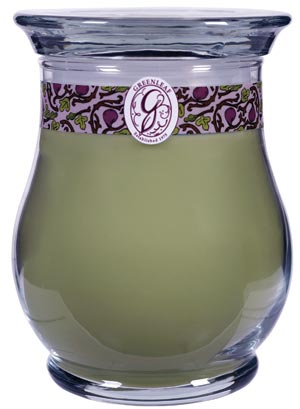 Candles made from other natural materials are also popular. There is the traditional favorite—beeswax—of course. Vance Kitira International in Little Falls, NJ, wholesales a series of candles made from palm wax, another renewable plant-based resource. The oil in the fruits of palm plants is pressed and distilled to make the wax. Each of these candles is imprinted with an Indian almond leaf, which leaves its natural dyes and imprints behind on the pillars. The company also wholesales soy wax candles.
Candles made from other natural materials are also popular. There is the traditional favorite—beeswax—of course. Vance Kitira International in Little Falls, NJ, wholesales a series of candles made from palm wax, another renewable plant-based resource. The oil in the fruits of palm plants is pressed and distilled to make the wax. Each of these candles is imprinted with an Indian almond leaf, which leaves its natural dyes and imprints behind on the pillars. The company also wholesales soy wax candles.
River Bend Candle Company in Elkhorn, WI also manufacturers candles made out of 100% palm wax. Owner and President Barbara Hall says that her suppliers are associated with the Roundtable on Sustainable Palm Oil, an international organization dedicated to the growth and use of sustainable palm oil.
The biodegradable, environmentally friendly wax is virtually black smoke and soot-free. “Palm wax naturally produces candles in a unique crystallized pattern. They glow from the inside out, so you can see part of the crystallized pattern glowing from underneath the melt pool,” says Hall. “The wax is water soluble and spills can be cleaned up easily with soap and water,” she adds.
Hall says that white tea, lavender, and Summertime Rain scents are the company’s three best sellers. Most of the fragrances contain essential oils, and the few that do not are because the oils are not available in that particular scent or blend.
In addition to soy wax and palm wax, Way Out Wax in Morrisville, VT uses hemp seed oil in some of their candles. Anna Barrett, marketing and media relations representative says that hemp seed oil is a good choice for candle making because it not only increases the burn time (like soy wax) but also provides a lustrous finish to pillar candles. The oil is made from pressed seeds of hemp (cannabis) plants that are low in THC, the psychoactive molecules known to be found in the plants. THC can produce a “high” that affects brain functions such as concentration, memory, and sensory perception. The manufacturing process of the oil results in an extremely low or an untraceable amount of THC.
“All of our pillars are made with hemp seed oil and palm wax,” says Barrett. She adds that container candles such as glass tumblers and travel tins are made with 100% soy wax and their best-selling candles are the Sweet Dreams, Escentual Love, Lavender, Sage, and Patchouli aromatherapy candles.
Sparking sales
Tracy Sullivan from Hillhouse Naturals says that retailers have increased their candle sales by offering two or three different soy wax candles, or another item such as a diffuser or linen spray, from the same collection. “Our collections make a statement on a retailer’s shelf,” says Sullivan.
Mark Lappin, manager of Rumrunner in the Hamptons, agrees that stocking more than one item in a collection increases sales. This furniture store that also sells gifts, stocks four collections from Hillhouse: cashmere, botura, lavender, and shells. “They are displayed in the store by the theme; for example, the shells collection is in a nautical area of the store and the lavender collection is in a bright, colorful area,” Lappin says. He adds that all of the collections sell incredibly well and many customers will buy, for example, two different candles in a collection and another item to go with them, like a linen spray. “The cashmere collection is our best seller. Customers come in and ask for it all the time—they’re addicted,” he says.
The Blossom Boys, a flowers and gift shop in Chicago, recently came up with an interesting marketing idea. The store promoted the White Branch candles as part of “Celebrate Your Goddess” month. Companies with women leaders (such as White Branch) qualified and were part of the marketing strategy. To appeal to eco-conscious customers, the store played up the low carbon footprint buying from White Branch would generate. The company is in the Midwest; therefore the distance that the items are shipped would be minimal.
Pack up and go green
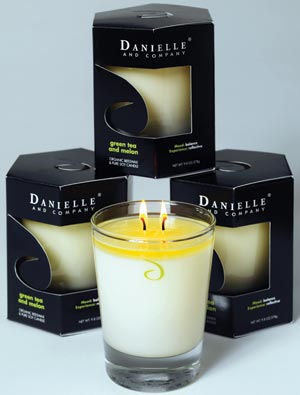 To complete the message, green candles also need green packaging. River Bend Candle Company sells candles in glass containers and tins just the way they are, and not in boxes. “Votives are in a single plastic wrap and for packing I use starch peanuts which are biodegradable and can be watered down,” says Hall. She adds that she buys back empty clean jars from her local customers for a quarter.
To complete the message, green candles also need green packaging. River Bend Candle Company sells candles in glass containers and tins just the way they are, and not in boxes. “Votives are in a single plastic wrap and for packing I use starch peanuts which are biodegradable and can be watered down,” says Hall. She adds that she buys back empty clean jars from her local customers for a quarter.
White Branch Candles uses recycled packaging. “We are big proponents of re-using; we re-use boxes that are used for our shipments,” says Salmon. The packaging used by Hillhouse Naturals is produced at a facility that uses 100% wind power.
“Way Out Wax has been resisting industry pressures to over-package individual candles. We work to eliminate unnecessary waste by using [minimalist] packaging and encouraging reuse of all our glass and travel tin containers,” says Barrett. Instead of using a gift box for each candle, the company strives to make the glass or tin container a stand-alone product.
Kasteler says that 100% soy ink, all natural glues, natural cottons, and 100% recyclable materials make up BsaB’s packaging. No packing materials have been bleached or chemically treated and many are recycled. The company employs a center for disabled citizens to do their paper shredding which allows them to not only continue their recycling efforts, but to also help a worthwhile organization.
Vance Kitira also uses natural elements in their packaging to createacomplete green package. Soy candles from the company’s Natural Essences collection are packaged in a saa (mulberry) paper box and banded with the inner layer of a banana tree trunk.
Brenda Salmon at White Branch says the company started producing soy candles to help retailers give customers what they want. “There are more and more people who are very conscious of their health; what they put on their skin, what they put in their homes, the air they breathe, and the food they eat,” she says. Branching out to green candle choices will help you cater to these eco-conscious customers more effectively.
Mouse over images below to view.
